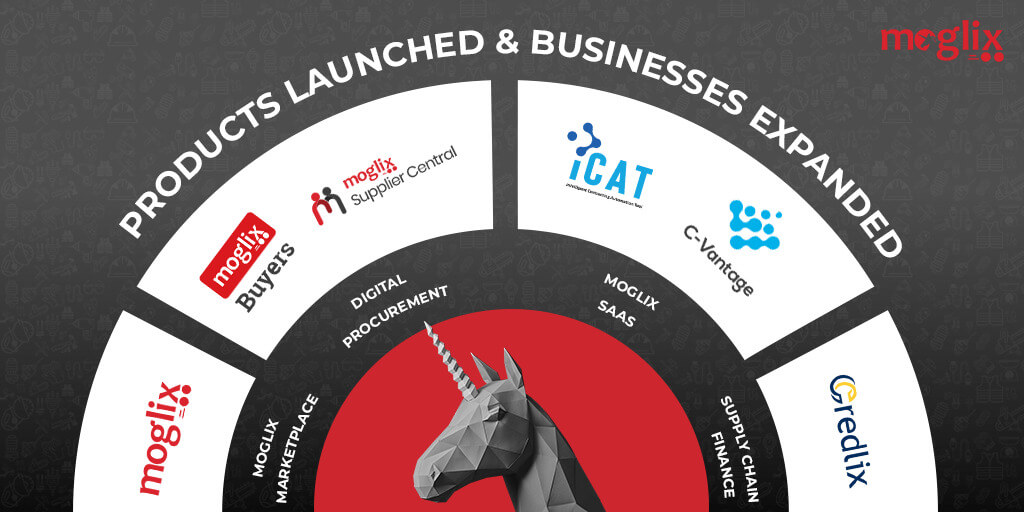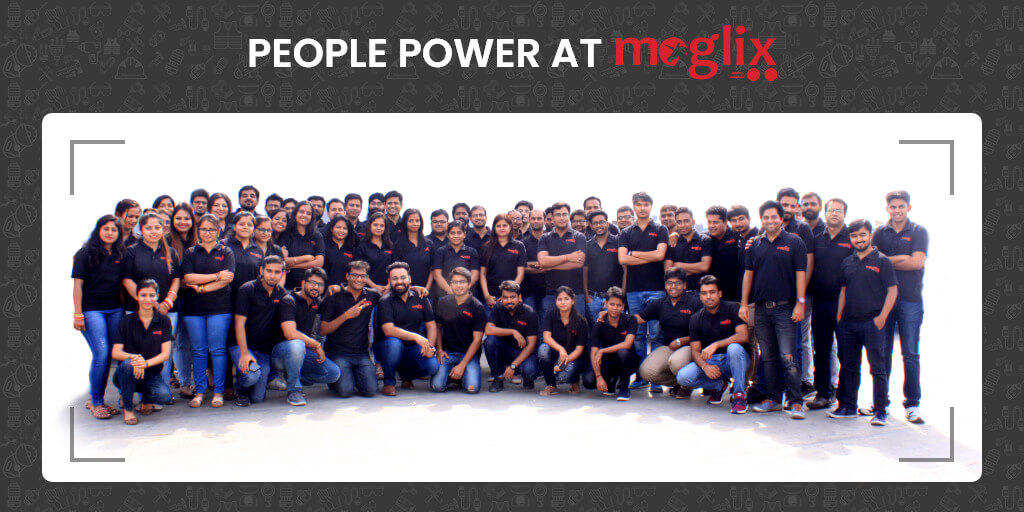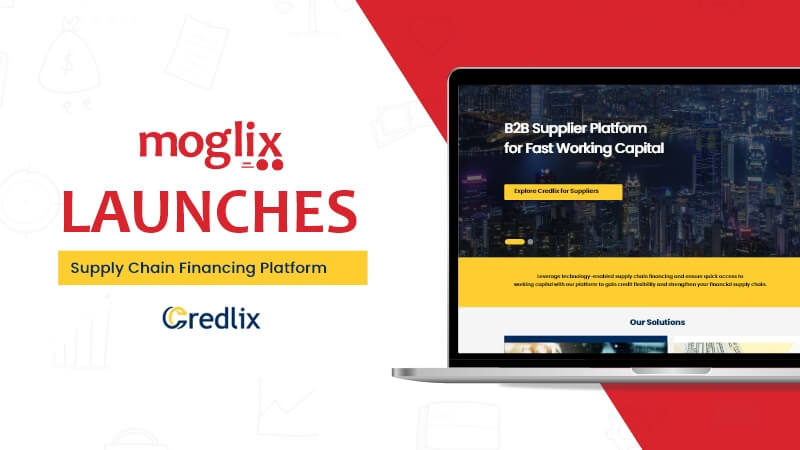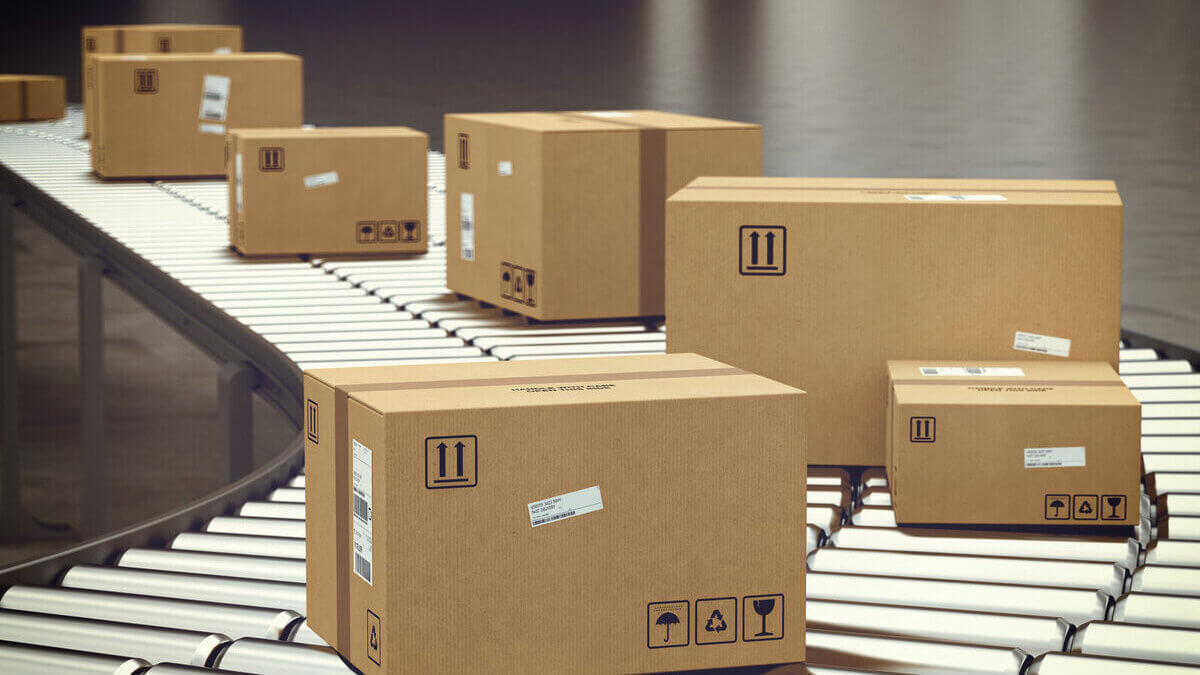Reimagining Customer Experience in Custom Manufacturing

Reimagining Customer Experience in Custom Manufacturing
When a butterfly flaps its wings on one side of the world, its ripple effect is felt on the other side—a simple explanation of the complex Chaos Theory, which purports that a small change can have far-reaching implications. After the pandemic, the industry returned to normal, and the rush to build back better meant that infrastructure project completion was a high priority.
Where Does the Infrastructure Boom Come Back to EPC Companies?
For EPC companies in India, the last month has been a roller coaster ride. India’s largest iron ore producer, the state-controlled National Mineral Development Corporation (NMDC), raised prices for a second consecutive month. Cement producers have also had to raise prices due to the disruption in coal and pet coke supply due to the war escalation in Eastern Europe.
What is the Balance Sheet Impact on EPC Companies?
The implications of this unpredictability have immense top-line effects for EPC companies. For example, short delays of even one week in the execution of infrastructure projects in India lead to a 0.01% hike in costs. Over a year, this can lead to 10-12% liquidated damage charges for the EPC contractor.
What Does This Have to Do with Customer Experience in Custom Manufacturing?
Today, a high-quality customer experience is all about outcomes. For an EPC company, unpredictability in material prices, logistics delays, and manual vendor management create a less than ideal user experience. This applies equally to their teams and the customer, usually a public entity.
How Do Moglix Digital Project Management Solutions for Manufacturing Make a Difference?
Global engineering, procurement, and construction companies bank on our digital project solution to transform their custom manufacturing. We provide a wide range of solutions that bring large amounts of spend under control by streamlining your supply chain operations.
The Moglix manufacturing-as-a-service solution is built to enable near real-time visibility into the order-to-delivery of custom manufacturing requirements. Our digital project management platform allows EPC contractors to stay in control of their projects’ custom manufacturing requirements. Our digital track and trace capabilities bring tremendous benefits in planning, price standardization, and collaboration on a single platform. Add an extended network of 40+ multimodal logistics partners and 38+ warehouses which results in seamless collaboration across all stakeholders and keeps project budget overshoot down to the minimum.
The Future of Customer Experience in Custom Manufacturing
Extended features like track and trace, vendor management, and data analytics to predict price fluctuations, supply chain bottlenecks, and material shortfall are ushering the EPC ecosystem into a modern age of transparency and customer-centricity. Many EPC contractors and large infrastructure project companies that are building India’s National Infrastructure Pipeline are already reaping the benefits of our global supply chain expertise combined with our dependable manufacturing network. An efficient and profitable end-to-end project management experience is the key to EPC companies delivering a superior customer experience. It is the future of custom manufacturing and it is unfolding now.
Why is Light-Emitting Cement the New Favorite with EPC Companies

Why is Light-Emitting Cement the New Favorite with EPC Companies
Source – thejupital.com (legend-lights-the-path
Can you picture your walls lighting your space without the need for any electricity? Have you ever considered how difficult it would be to drive and stroll on the roads at night if there are no street lights? Well, it’s time to accept that the technology for sustainable construction materials has advanced in ways we could never have predicted.
Each one of those points listed above is now possible with the advent of light-emitting cement. Light-emitting cement is a sustainable construction material that does not use power to illuminate highways, roads, bicycle lanes, or rooms (if used in construction projects).
Dr Jose Carlos Rubio of the Michoacan University of Saint Nicholas of Hidalgo in Mexico created this groundbreaking cement. The goal of the study was to change the microstructure of cement so that it could absorb solar energy and emit light in the dark.
The phosphorescent materials collect energy from the sun, light from lights or lamps while indoors, and then glow during the dark hours. The cement is said to be able to shine for 12 hours even on cloudy days since the substance gets energised every day with ultraviolet radiation.
Since the gel is formed of sand, dust, clay, and water, it is clean and renewable. Due to the general inorganic nature of the cement components, the material is expected to last for 100 years.
In comparison to existing phosphorescent materials such as plastics or paints, which degrade over time due to UV rays, this novel material is sun-resistant and more lasting. The total carbon footprint of this product is also potentially lower than regular cement. This means there is the potential to save a lot in maintenance costs as lower than contemporary cement.
Engineering, Procurement and Construction (or EPC companies) are turning to unique and sustainable materials for infrastructure development. These sustainable construction materials fit in well with the guidelines outlined within the National Infrastructure Pipeline.
The National Infrastructure Pipeline, or NIP, which will run from 2019 to 2025, is a “first-of-its-kind, whole-of-government effort to offer world-class infrastructure to citizens and improve their quality of life.” Both economic and social infrastructure projects are included by the NIP.
Several countries have expressed interest in light-emitting cement, indicating that there is a commercial need for the material. The research is now being carried out in order to go to the commercialization stage.
The use of light-emitting cement in plaster and other construction materials is also under investigation. It is no wonder that light-emitting cement is now slowly becoming a new part of construction supply chains.
In an interesting application of this cement, after a trial of three months, Netherlands is one of the first to showcase their Glowing Lines project. It is claimed that their roads glow up to eight hours at night. The project is a collaboration between Roosegaarde and Heijmans and is a true example of an innovative industry.
For more information on how Moglix can help you with supply chain solutions for infra companies visit https://business.moglix.com/our-solutions/infrastructure
Enabling the Future of Oxygen Concentrator Procurement

Enabling the Future of Oxygen Concentrator Procurement
The second wave crisis of COVID-19 in India has sparked the need for oxygen concentrator procurement to meet the shortage of oxygen supply across the health continuum. The demand for concentrators has increased from 40,000 per year to 30,000–40,000 per month. If your NGO or resident’s welfare association (RWA) is looking for reliable oxygen concentrator procurement solutions, we have got you covered.
Why Should Your RWA and NGO Procure Oxygen Concentrators?
As patients battle for bed and medical oxygen supply, oxygen concentrators can play a significant role in moderate and extreme in-home/clinic treatment. Usage of these concentrators can ease the strain on hospitals while providing patients with a much-needed window to plan their medical treatment.
What Are the Benefits of an Oxygen Concentrator Bank?
An Oxygen Concentrator Bank or a streamlined oxygen refilling bank with a standardized operating procedure covering clinical guidelines will be beneficial to smoothen the collection and distribution of oxygen concentrators. It will be an efficient service that can be initiated by the local authorities to help thousands of families in distress and urgently need oxygen.
It will eventually help balance the demand and procurement ratio so that enough oxygen is available to overcome the prevailing demand of hospitals and residents. How can you create an oxygen concentrator bank for your RWA and NGO?
Here are five tips on oxygen concentrator procurement for NGOs and RWAs.
1. When to use oxygen concentrators?
Oxygen concentrators can only be used in mild cases of COVID-19 when the patient’s oxygen levels are dropping and the oxygen requirement is at a maximum of 5 liters per minute. Use an oxygen concentrator only for mild and moderate cases when oxygen saturation is >90%.
Patients with mild COVID-19-induced pneumonia with an oxygen saturation of less than 94 will benefit from extra oxygen administered by an oxygen concentrator, but only before the need for hospitalization arises.
You are not at risk of oxygen poisoning if you follow your doctor’s professional judgment in your oxygen therapy.
2. What should be the order size?
Keep 1%–2% of community strength as the number of oxygen concentrators required. The appointment of police officials and managers to coordinate with the RWAs for the smooth working of the oxygen cylinder bank should be the critical point of the SOP.
Each specified official should be responsible for a specific task to ensure the delivery of the refilled cylinder to the deserving family or candidate, getting the cylinder back when the need for refilling is over, then allocating it to the NGOs and RWAs.
3. How to ensure equitable distribution?
Local authorities should accept all types of oxygen concentrators and cylinders from residents. The refilled oxygen concentrators and cylinders should be given to respective NGOs and RWAs to further lend them for a few days as per the need.
The usage terms to borrow a concentrator for 3–7 days should be part of the SOPs. Moreover, NGOs and RWAs should receive refilled cylinders within 24 to 48 hours, which will help to deal with critical patients in a decentralized manner. The division of specific time slots to procure an oxygen cylinder, collect empty cylinders, send to refill, and allocate a filled cylinder will create an efficient distribution system. A special team can parallelly procure oxygen and collect medical documents and carefully check the prescription of the person needing it to validate the demand.
Additionally, volunteers can help organize home quarantine programs, mental health counseling services, a volunteer SOS task group, insurance coverage, and a COVID support fund for the COVID warriors and workers who keep the vital supply chain going.
4. How to ensure safety and hygiene rules?
Ask the oxygen cylinder suppliers to sanitize and hold back used oxygen concentrators 24 hours before subsequent use. Check for the flow rate capabilities of the oxygen concentrator before distribution so that high and low flow rate concentrators can be collected and distributed separately.
With the help of local government officials, senior colleagues, and administrators, create an oxygen guideline. The SOP should include a training scheme for physicians, nurses, and other oxygen users—implementing the agreed-upon hospital strategy and creating dosage and patient observation sheets to help standardize oxygen therapy.
5. How to track and trace orders and deliveries?
Ask for a dedicated resource for your community from the supplier to act as a single point of contact. Coordinating with the oxygen cylinder bank, oxygen concentrator suppliers and a collaborative effort to make different zones within the specific area for refilling the cylinders will help reach the required facility on time.
With these tips, NGOs and RWAs can make the procurement and distribution of oxygen concentrators efficient. The oxygen supply chain workers and the NGOs and RWAs looking for oxygen cylinder procurement should consider the following points:
- Check for the power consumption, warranty, size, and portability of the oxygen concentrator. The noise level should be between 40 and 58 decibels.
- Avoid being close to open flames while using an oxygen concentrator or tank. Keep a distance of at least 10 feet from open flames. Ensure that cigarettes, lamps, and gas stoves are out of reach.
- When using oxygen treatment, avoid using an electric razor; they have a knack for spitting sparks.
- When using supplemental oxygen, avoid putting on or taking off clothing that is vulnerable to static electricity.
- Since oil- and petroleum-based materials are flammable, please do not use them on the face while using oxygen.
Please contact us at info@moglixbusiness.com if your NGO or residents’ welfare association is looking for oxygen concentrator procurement solutions. We can assist you in establishing comparable group-sharing models for your local community and share our expertise and SOPs with you. Let us collaborate now to make a difference in people’s lives! Contact Us
How Manufacturers Can Save MRO Costs in UAE by 10%?

How Manufacturers Can Save MRO Costs in UAE by 10%?
If your enterprise is searching for solutions to save MRO costs in UAE, here is the catch. MRO costs usually account for somewhere between 5-10% of total costs and may not make up a significant chunk of the cost of goods sold (COGS). However, UAE has a highly competitive manufacturing landscape and even 1-2% of cost efficiencies can make or break your cost advantage.
To assist in a better way, we have outlined some of the steps to help manufacturers in the UAE avoid recurring expenses on MRO. If you are a manufacturer, you can take care of the following points to save MRO costs in UAE.
Manufacturers Must Minimize Return of Items
Delivering a product incurs a cost. Manufacturers price their products inclusive of that cost. However, when anything goes sideways, such as the product not being up to the quality standards as expected or has some defect, the buyer may return it. The return of items will add to the logistics expenses and impact the overall revenue.
Although the irregularities in the product may exist to some extent, manufacturers should try minimizing the double load on logistics by delivering the correct item in the first place. Here are a few points you can keep in check to reduce the rate of return:
- Quality Control Of Goods
- Correct Sizing Information
- Proper Packaging
- Timely Reviews and Feedback
- Round-the-clock Support
Take control of and implement those points to reduce the return of goods sold.
Manufacturers Should Opt for Digital Supply Chain Solutions
What humans can do, automation can do better. It holds in the case of supply chain management processes. It requires diligent work to manage the whole production line, i.e., from procurement to the final product delivery. If we focus just on the initial procurement part, there are different raw materials from various suppliers. On delving deeper, you have separate invoices for every procurement. On top of it, the communication channel is email, which requires regular follow-ups in case of any delays.
If you sum up all this, you will find it takes rigorous manual effort and consumes more time. As a result, your overall production time gets increased. However, if you enable procurement automation, you won’t have to stress repetitive tasks. Below are some notable advantages of relying on P2P automation:
- Easy-to-manage orders and supplies information
- A 50% reduction in TAT
- Easy monitoring of data
- Less hassle
Also, if multiple transactions happen at quick intervals, you can create an SOP and align your process to it. The SOP will help you scale your business. All in all, a refined approach coupled with digital supply chain solutions can create a difference in your final expenses. Thus, helping you boost your profits.
Manufacturers Must Find a Way to Deal with Ad-Hoc Procurement
As a manufacturer, you work on a contractual basis with your partners. You produce a definite amount of goods using the raw materials as decided in the contract. However, there are times when there is an unscheduled requirement of any product. Being a non-recurrent and non-strategic demand, it increases manufacturing enterprises’ expenses.
To solve this issue, manufacturers can take some steps such as:
- Enter into annual rate contracts
- Request for bulk orders
- Regulate your logistics
- Enable Procure-to-Pay solution
- Streamline processes
The main route of escape for manufacturers here is switching to annual rate contracts. In that way, they will be able to fulfill orders in a much better way. It will help them to avoid any unplanned expenses because of no ad-hoc buying.
Manufacturers Should Take Advantage of Data Analytics
The projection of demand and supplies can be difficult to gauge when you rely on static data. For example, an item you are producing may not garner similar interest in the market at a particular time due to various reasons. Since every step in the production line is interconnected, it is critical to have a correct projection right from scratch.
To do so, manufacturing enterprises can use technology and gain valuable insights into the procurement process. New-age technologies such as Artificial Intelligence (AI) and Machine Learning (ML) can help manufacturers create a mathematical model based on inputs from the data collected and facilitate better decision-making.
Some important avenues that AI and ML will open up for manufacturers are:
- Ability to look beyond the static data
- Evaluate the correct demand
- Improved risk management based on collected data
- Flexibility and transparency
P2P software solutions enhanced by AI and ML technologies can unlock opportunities that remain hidden from us. Thus, adding to the MRO costs, which you can save.
Wrapping Up
Summing up what we have learned here is that saving MRO costs for manufacturers in the UAE is a choice. With a careful, proactive approach and use of technology, you can minimize additional expenses and save up to 10% MRO costs, thus maximizing profits in the long run.
Moglix 2.0: Hitting the USD 1 Billion Valuation Mark and Impacting Lives

Moglix 2.0: Hitting the USD 1 Billion Valuation Mark and Impacting Lives
We started with a simple vision: How can we re-imagine B2B commerce and supply chain with technology?
From inception in 2015 to hitting the USD 1 billion valuation mark, the seed to unicorn journey of Moglix has been a tale of fearlessness, innovation, agility, and collaboration. The Moglix story rekindles hope and fires the aspirations of the manufacturing sector in ways that are absolutely unprecedented.
The milestone in our journey is also a testimony to the distance that India’s manufacturing supply chain ecosystem has traversed in these six years, its digital transformation, and the promise it holds for us as we chase the target of a USD 5 trillion GDP manufacturing economy.
Disrupting the Indian Manufacturing Sector with a Tech-first Approach
Technology enablement in the Indian manufacturing supply chain ecosystem in 2015 was at less than 2%. Building an enterprise that would leverage technology to reinvent B2B commerce and supply chains in India and transform a segment that had not seen innovation in a long while. It led to the birth of Moglix, a self-serve e-commerce platform fully equipped to streamline the buying and selling of 3,00,000+ SKUs of industrial goods.
In 2017 when India launched a crucial economic reform in the rollout of the GST, we began institutionalizing the processes needed to simplify our collaboration with all stakeholders in the supply chain. We started building a digital procurement platform with the aim of personalizing the B2B commerce experience for enterprises. Since its rollout, the Moglix Buyer’s Terminal has facilitated enormous ease of procurement of indirect materials, reducing time engagement on supplier collaboration by 80%, enabling 20% cost reduction, and onsite deliveries of 1.5 lac+ SKUs. It has enabled a seamless transition to work from home for 5000+ procurement team employees of our enterprise customers through the pandemic.

Entering the SaaS realm with iCAT and C-Vantage in 2018, we were focused on simplifying contract creation and enabling effective contract management for procurement teams. we were able to create an impact of 80,000 direct procurement contracts worth USD 10 billion by improving the cycle time of contracts.. In addition, the solution assumes tremendous significance in upholding the values of trust, transparency, and equity in OEM-supplier relationships in times of eroding uncertainty and supply chain disruptions amid the COVID19 pandemic.
Solving the Cash Flow Conundrum for MSMEs
As we continued to partner with enterprise buyers, we realized that there awaits a tremendous opportunity for suppliers, especially MSMEs, to connect to relevant growth and capacity expansion opportunities through OTIF order fulfillment and pan India distribution. The Moglix Supplier Central platform has been instrumental in shaping faster technology adoption in our supplier base.
While letting go of traditional manufacturing methods to embrace digital solutions was one challenge, the other was creating access to on-demand collateral free credit. Building a custom digital supply chain financing solution Credlix. Our vision is to provide working capital solutions to a large base of 500,000 MSMEs and 16,000 suppliers as well as improve collaboration between suppliers and buyers.
Our Secret Ingredient?
The people working at Moglix. We have a highly skilled team solving the hardest problems with a tech-first approach. We are grateful for the talent across MRO, Packaging, supply chain finance building smart tech to disrupt the #manufacturing sector.

Expanding into New Geographies
The onset of the pandemic has been an eye-opener for all of us. To match steps with our customers and suppliers, we had first to ensure the health and safety of our employees. Being built from the ground up on the cloud allowed us to pivot to a work-from-home model swiftly.
In hindsight, our technology-first approach has been our savior, enabling us to “do more with less for more.” A powerful testament to this adage is how we turned around our supply chain in 3 days at the pandemic’s peak in April and May last year with just 30 onsite staff.
When we launched Moglix in 2015, B2B startups were just 26% of the total startups in India & #B2Bcommerce was the next big area of innovation. Today we are proud to have built a platform that serves over 7 lac SKUs listed on our e-catalog: the largest in India in the MRO category pic.twitter.com/eFxua9YGp7
— moglix (@moglix) May 17, 2021
Our digital supply chain network is also a key enabler of our efforts to go global and transcend geographical boundaries. Over the past year, we have been able to integrate the UAE and the U.K into our supply chain. We exported PPE kits to 4 locations in the United Arab Emirates and 3 Ply masks to the U.K that were approved by International Quality Certification Services UK Ltd and CE certified.
What’s Next: The Immediate, The Intermediate and the Long-Term
The second wave of the COVID19 pandemic has severely impacted vulnerable communities in India in ways least expected. In the immediate aftermath of the pandemic, we will continue to support communities of people through our PPE supply chain solutions as we have been doing over the last year. While we have enabled PPE kit availability for 10 million people across 120 countries and 500 locations across India, we have now taken an initiative to streamline the oxygen concentrator supply chain through our group sharing model.
We are collaborating with 10 large enterprises, NGOs, and RWAs to enable communities of people to access oxygen concentrators across India through our innovative network-based distribution model. Learn more about our role in solving the oxygen crisis here.
Our focus on First Principles Thinking, how we define the market, and success criteria has led us to create the new operating system of B2B commerce for the manufacturing world. Looking forward to achieving many more such milestones as we continue our quest to build a bigger manufacturing economy.
CPOs and the E-Commerce Boom in Indirect Material Sourcing

CPOs and the E-Commerce Boom in Indirect Material Sourcing
Indirect material sourcing has long been riddled with uncontrolled expenditure, non-compliance, and counterfeit products. Traditionally, these risks have made CPOs of large enterprises opt for a direct approach when dealing with suppliers.
With rising costs, potentially unregulated products, and the COVID19 pandemic-led supply chain disruptions in the UAE, a CPO’s job is becoming increasingly stressful. It is especially true for CPOs of large manufacturing enterprises across the Middle-East and North Africa (MENA) geographies where the pandemic has impacted 60% of freight capacity and multimodal logistics.
Integrated Solutions for Procurement
With the e-commerce boom taking over B2B marketplaces, CPOs are welcoming procurement automation solutions with open arms. These new generation P2P software solutions offer scalability, reliability, and risk assessment — all under the same roof.
Besides providing attribute-rich catalogs of pre-vetted, high-quality vendors of indirect materials, these B2B e-commerce solutions offer a dynamic range of functions. Some of these functions are customization, user-friendly interfaces and search options, real-time pricing, and industry benchmark comparisons. With their AI and ML capabilities, these systems can even generate analytics on KPIs such as price spread and per-category spend.
Benefits of E-Commerce for CPOs
B2B e-commerce offers a series of features that are beneficial across the p2p procurement process. They have multiple payment options available in AED, language translation assistance to Arabic, and easy refunds & return policies.
They also offer filtration of vendors based on their proximity to the manufacturing unit, quick logistics, and competitive shipping rates throughout the emirates. Let’s take a look at some of the key benefits e-commerce systems offer to CPOs.
Agility
B2B e-commerce solutions give enterprises quick and easy access to a robust e-catalog of indirect materials, akin to a B2C e-commerce experience. The products and services are structured and itemized based on several attributes and filtered by a configurable list of business rules. This includes but is not limited to compliances, ratings & reviews, technical specs, availability, and shipping rates. These automated systems have rapid TATs across the p2p pathway and endow the CPOs with greater transparency and market awareness channels to make better decisions.
For instance, the global procurement head of an automotive OEM has said that e-commerce adoption for indirect material sourcing has increased their price competitiveness. “It has expanded our knowledge,” he explained, adding that their enterprise is now planning to digitize their direct material sourcing as well.
Cost Savings
Typically, enterprises spend 15% to 30% of their revenue on indirect material sourcing. It is usually valid for enterprises with fragmented spending structures and limited internal resources for procurements. The human capital spent on the traditional procurement process is perhaps the highest. CPOs spend countless hours in monotonous transactional activities that leave them with little to no time for any value-addition work to the enterprise.
However, with digital procurement automation solutions, operational costs in UAE can be reduced up to 40%. More importantly, they offload CPOs with hours of repetitive work. It unlocks critical free time for CPOs to spend on supply chain management and optimization of the p2p procurement process.
Technology Integration
For large manufacturing enterprises, the integration of an e-commerce marketplace with their existing ERP is the deciding feature of pre-investment. By entangling itself with the enterprise’s p2p procurement process, the e-commerce solution automatizes and simplifies a vital link of the digital supply chain. It enables the system to intelligently monitor inventory, issue purchase orders, execute payments, track deliveries, and receive stock. It also minimizes the hassles of negotiations, contract management, and price comparisons.
Some of the advanced digital procurement systems offered by digital supply chain solutions enterprises can seamlessly integrate with ERPs like SAP, Jagger, and Oracle. These systems successfully streamline the accounting, reporting, and controlling of the procurement process, thus building end-to-end supply chain visibility.
Data Cleaning & Management
A global market study indicates that almost 63% of the items listed in a conventional procurement catalog have incomplete or duplicate information. However, with digital supply chain solutions, CPOs can assess their MRO master data quality using the system’s native AI and ML capabilities. These data analytics tools can also learn user behavior over time and generate optimized results that promote operational excellence.
Reports on purchase, fulfillment data, including buying history, spend limits, and wish lists, make it convenient for procurement teams to increase their work efficiency.
What CPOs Need to Know
With increasing demand, the scale of high-quality suppliers of indirect materials is rapidly growing on B2B e-commerce solutions. Some experts predict that by the end of 2021, 60% of the large enterprises will be using digital procurement methods for indirect material sourcing. It is also aligned with the government’s vision to digitize UAE’s economy in the coming years.
With a rationalized and automated procurement solution in place, the role of the CPO is shifting from being a negotiator to that of a creator. The present-day CPO discovers new marketplaces, innovates new procurement strategies, and collaborates with suppliers. The CPO also draws new digital blueprints for quick approvals and reviews, and smoothens the enterprise’s upstream supply chain operations.
The Benefit of E-Catalog for Indirect Materials Procurement

The Benefit of E-Catalog for Indirect Materials Procurement
E-Catalog | Indirect Materials Procurement |P2P AutomationRead More
Moglix launches digital supply chain financing platform Credlix

Moglix launches digital supply chain financing platform Credlix
Moglix launches digital supply chain financing platform Credlix with the aim to provide quick collateral-free working capital solutions for its 15000+ suppliers and make the supply chain ecosystem future-proof from disruptions.
Credlix aims to make it easier for the suppliers to get just-in-time payments through its technology-driven supply chain financing system. Suppliers will be able to request early payments from enterprise buyers at affordable discount rates to keep their supply chain up and running even during times of disruption.
Rahul Garg, Founder & CEO, Moglix said in a statement,
MSMEs in India account for 11 crore jobs and 29% of the country’s GDP. Unclogging the cash flow through the supply chain will be integral to fostering winning partnerships between MSME suppliers and large enterprise buyers and realizing the Government of India’s vision for Aatmanirbhar Bharat.
Credlix is on track to provide invoice discounting of Rs 1000 crore over the next 12 months and is aiming to touch Rs 10,000 crore discounting value over the next three years by scaling up to include more banks, suppliers, and geographies.
Read MoreMoglix in 2020: The Year of Supply Chain

Moglix in 2020: The Year of Supply Chain
Everything that we reimagined at Moglix in 2020Read More
4 Essential Packaging Supply Chain Solutions for Manufacturers Ahead of Diwali in 2020

4 Essential Packaging Supply Chain Solutions for Manufacturers Ahead of Diwali in 2020
Exactly how robust are your packaging supply chain solutions? If you are a manufacturer, you understand that Diwali 2020 is going to put your packaging supply chain solutions to the ultimate test.
On the one hand, health and supply chain risks due to the COVID19 pandemic loom large. Sourcing the right packaging SKUs, optimising quality and cost, warehousing, and reducing last-mile friction are four major challenges this year. On the other hand, Diwali 2020 is the beginning of yet another busy festive season in India.
You and your team of supply chain managers need to map the pain points and make contingency plans. You also need to optimize your packaging supply chain management systems and be prepared to create great customer experiences. Here, we share a compact list of four essential packaging supply chain solutions that will help you prepare. Let’s explore.
Challenge 1: Sourcing the Right Packaging SKUs
Share the types of packaging solutions that you require with your packaging suppliers. Communicate your custom packaging solution specifications and ask for relevant samples and new product development capabilities.
Share the details of your brand persona and an outline of who your customers are. What are your unique supply chain challenges? Does your packaging resonate with your brand’s value proposition?
If you operate at the point of origin of the supply chain, prioritize the primary packaging SKUs that will contain the contents of your product. If you are a distributor, you need to focus on secondary packaging. If you have a country-wide distribution network, map the last-mile challenges and ask for relevant tertiary packaging solutions.
Pro-Tip: Look for an integrated packaging supply chain solutions provider that has a large network of local packaging suppliers across the country. Yoru supply chain managers will get a single point-of-contact and can get turnkey packaging solutions on-demand. Further, you will save big on procurement costs and supplier collaboration efforts.
Challenge 2: Quality and Cost Optimization
Create a list of quality specifications for your packaging SKUs. Map the overall order size and procurement costs. Share your packaging quality and cost requirements with your supplier. Furthermore, seek new ideas to save costs on your packaging from your suppliers.
While optimizing costs, also look at how your total packaging costs impact the unit economics and pricing of your products. Explore ergonomic packaging designs and products that allow you to accommodate more volumes per packaging unit.
Furthermore, give due consideration to the weight of the packaging materials and its direct bearing on the cost, insurance, and freight (CIF) of your supply chain. For instance, corrugated cardboard boxes, paper bags and paper boxes are lightweight and allow supply chain and logistics personnel to add more cargo per packaging unit. Doing so makes the shipping process more cost-effective.
If your enterprise is bound by environmental compliance regulations, ask your packaging suppliers to demonstrate their sustainable packaging offerings along with the corresponding impact on the carbon footprint.
Pro-Tip: Conduct a packaging audit at your plant locations periodically. A packaging audit entails a thorough diagnosis of your packaging supply chain and spend-analysis. You can derive intuitive insights from your data analytics to optimise the quality, costs, and risks in your packaging supply chain. A packaging audit is especially recommended to maintain smooth business continuity throughout the year and peak load seasons like Diwali.
Challenge 3: Warehousing and Inventory Stock-Out
The shortage of warehousing space and inventory stock-out are two pertinent challenges during the festive season. Map your warehouse capacity in advance and ask your supply chain managers to share data on the packaging consumption rates during the peak season. Engage with your packaging suppliers. Seek the details of the expected time of arrival (ETA), lead time and order processing time that they need to deliver any unplanned packaging orders in the face of an inventory stock-out.
Furthermore, opt for local sourcing options this year to steer clear of the risks of supply chain disruptions. Prioritize the location of your packaging solutions suppliers and their access to multimodal transport. Search for a packaging vendor with integrated logistics and supply chain management capabilities across India.
Pro-Tip: Choose an integrated supply chain solutions provider as your packaging partner with a large network of logistics partners and warehouses. If you are a multi-plant manufacturer opt for a captive supplier. A captive supplier is one that will hold your packaging inventories on their account books at your site location. Partnering with a captive supplier will ensure you JIT delivery of all types of packaging units at your site on demand.
Challenge 4: Last-Mile Friction
While last-mile delivery has always been a challenge in the B2B supply chain, this year’s COVID19 pandemic only compounds its magnitude. With social distancing norms in place and customers demanding access to products from the comfort of their homes, you need to reimagine the last-mile of your supply chain journey.
This is especially true for consumer goods, pharmaceuticals, e-commerce, food & beverages, and chemicals because of the limitations of shelf-life and expiration date. Gaining visibility into the last-mile journey is the key to ensuring that your products reach customers fresh, compact, and safe. Opt for cost-effective and smart packaging solutions like RFID tagging. Use digital packaging systems to ramp up your tertiary packaging, track the movement of your products, and reimagine the customer experience.
Pro-Tip: Leverage smart packaging technology to zero down the gaps with your customers. You can map end-user trends, consumption patterns, and purchase volumes. You can also adopt reusable and recyclable packaging by integrating technology with your packaging.
For instance, you can insert a sensor in standard wooden packaging boxes and track their reverse logistics, recycling, and reuse. Doing so, you can reduce both your carbon footprint and packaging costs.
Prepare for the New Normal and New Possibilities in Packaging Supply Chain This Diwali
This year’s Diwali will be different from yesteryears. Prepare your supply chain for the new normal. Ramp up your packaging supply chain in advance and be open to new possibilities during the festive and holiday seasons. Browse Moglix Packaging Solutions and connect with our experts to learn more.
